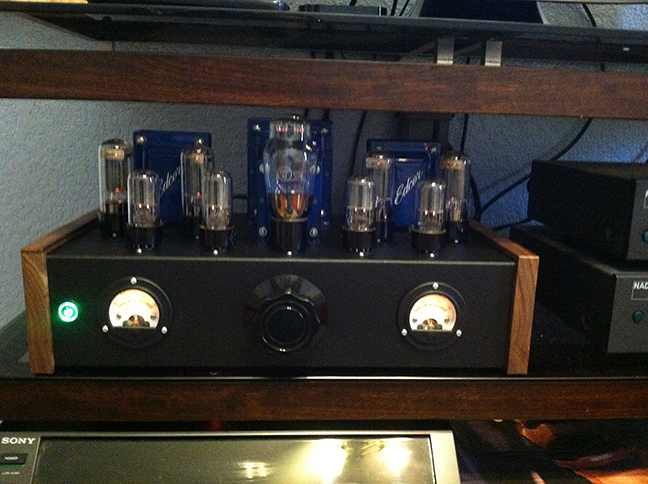
A 25W Stereo Williamson Amplifier
Designer:
Craig J. Coley
Project Category:
Amplifiers
Project Level:
Advanced
Project Time:
20+ Hours
Project Cost:
$500 – $1,000
Project Description:
This project is called the Coley W225. It is a two-channel, 25W Williamson amplifier using ultra-linear output transformers. Each channel uses a pair of 6SN7 dual triodes driving a pair of fixed bias 6L6GC output tubes. The THD of the amplifier has been measure at 0.75% THD at full power and less than 0.25% at 1W. Frequency response at 1W has been measured to be 20Hz to 28KHz ±1.0dB at 1W. The design includes internal Bluetooth 4.0 and RF remote control. A small key fob remote control operates a motorized Alps volume control and the power relay. Front panel metering is incandescent backlit and shows the 6L6GC cathode current of each channel.
Design Goals:
This project began purely as a hobby amplifier based upon the 1949 publications by Williamson and the 1950s publications by David Hafler. The ultimate design is my own, based upon currently available components. The development work ended up proving the timelessness and quality of the products produced more than a half-century ago by companies like Dynaco.
Tips & Tricks:
The design was developed and proven with a rough prototype constructed on a wooden panel. The power for the prototype was provided by an older Heathkit variable supply that was a great help in determining design margin, THD and bias levels. A General Radio load and power meter was used for all testing.
Once the design was tested and found to be robust, a new schematic was created for the stereo version. The final design included a 5U4 tube rectifier to provide a soft startup, preventing cathode stripping of the tubes when HV is applied before the tubes are warm. The somewhat unusual decision was also made to include Bluetooth in the final design; finding a high quality receiver board was difficult but the results were surprisingly good and it allowed for convenient play from a variety of streaming services like Spotify.
For the mechanical work, a 2D CAD drawing was created for the chassis which aided tremendously in producing a symmetrical and pleasing finish. Prior to drilling, the chassis was covered with vinyl tape to prevent scratches while performing the required mechanical work.
Conclusion:
The final version of the amplifier was beyond any initial expectations and has become the only amplifier I use. The remote control and Bluetooth make the amplifier both easy to operate and useful with a wide variety of playback devices.
The DIY approach was not cheap however, especially when the development costs of a new design are taken into consideration. Direct material cost was $850.00 and construction time was 40 hours. The actual development cost, however, was well over $2000.00 due to the cost of test equipment, tooling, extra tube sets and various Bluetooth and remote modules evaluated.
About the Designer:
This project was designed and constructed by Craig J. Coley of Burleson, TX. I work as an electrical designer and am listed as inventor on 8 US patents in the field of electro-optics. I have been an electronics hobbyist since I built a Heathkit radio at age 7 and a ham radio operator since age 11.
Parts used:
All transformers and inductors were ordered directly from Edcor. Resistors under 5W are carbon film, resistors 5W and above are ceramic wire wound. The design was tested with NOS American 5U4G, 6SN7 and 6L6GC tubes, NOS Soviet 5C3S, 6N8S and 6P3S tubes, as well as new Electro-Harmonix; all types performed well. Soviet tubes are installed in the final version and were used for all testing. The chassis is a stock Hammond steel model with walnut sides. 600V poly capacitors were used for coupling and Nichicon aluminum electrolytics were used for the power supply.

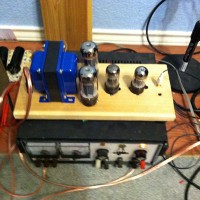
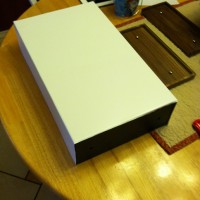
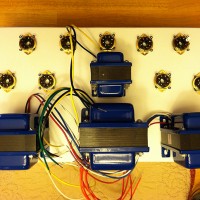
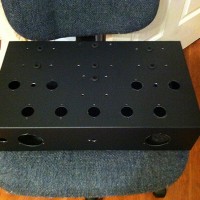
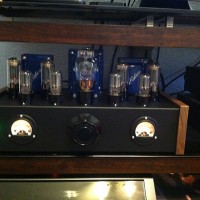
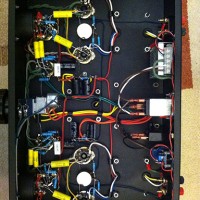
If nothing else, it’s gorgeous!
Thank You!
Hey Craig, this looks like a really rewarding project! Are you willing to share the circuit and BOM?
I don’t mind sharing a schematic and BOM but haven’t quite figured out how to do that on the PE project list. I also need to be somewhat selective because 420V can be dangerous for inexperienced builders.
Craig beautiful Amp, I too would like the schematic and BOM. I grew up with my dads TV repair shop in our garage and have been in electronics my whole life so to speak. I currently work for a power utility.
My email is craigjcoley@gmail.com. Contacting me directly might be the best way to exchange information.
Nice!
Some 55+ years ago I built a pair of EICO Williamsons, and ran the 6SN7s and EL34 outputs which I replaced with matched KT88s.
Unfortunately, one got soaked the day in 1970 I moved into my new home. Sat the amps on basement bar and dishwasher directly above decided it wasn’t going to hold its water. I gave the other away (dumb!)
I have never since been able to replicate the amazing clarity reproduced by those amps.
I still have Phase Linear equipment, but it’s not the same…
Nice design looking forward to more from the guru